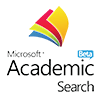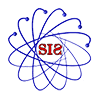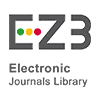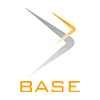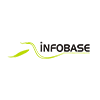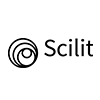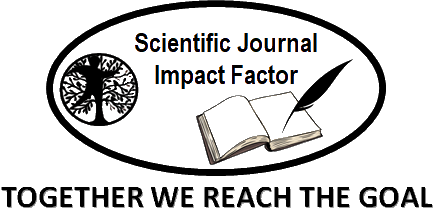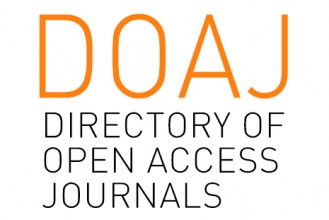Enhancing Pre-Service Mathematics Teachers’ Conceptual Understanding Through Technology Integration: A Systematic Literature Review
Abstract
This systematic review analyzes the role of technology integration in improving the conceptual understanding of pre-service mathematics teachers based on the latest literature (2016–2025). Current research remains limited in addressing how technology is integrated into pre-service teacher training, with the majority of previous studies focusing instead on technology use among students. This study aims to explore the types of technology utilized in pre-service teacher education and to analyze their influence on the development of pre-service teachers’ conceptual understanding. The implementation method followed the PRISMA guidelines with a systematic search in six databases (Scopus, ERIC, ProQuest, Emerald, Taylor & Francis, Springer), resulting in 17 articles that met the inclusion criteria after going through a rigorous selection. The results of the study reveal two key mechanisms: (1) Dynamic visualization and representation (through dynamic geometry software such as GeoGebra) that transforms abstract concepts into concrete, facilitating the understanding of mathematical principles and the relationships between concepts; (2) Interactive learning (Web 2.0-based) that encourages independent exploration, collaboration, and the development of critical thinking. Successful implementation depends on structured guidance within the framework of Technological Pedagogical Content Knowledge (TPACK). The study's conclusions confirm that the integration of technology significantly strengthens the conceptual competence of pre-service teachers as the foundation of effective teaching practices while addressing the gap in previous training models.
Keywords
Full Text:
PDFReferences
Aidoo, B., Vesterinen, V.-M., Macdonald, M. A., Gísladóttir, B., & Pétursdóttir, S. (2022). Perceptions of Ghanaian Student Teachers on Benefits and Challenges of the Flipped Classroom: A Case Study. Contemporary Educational Technology, 14(4), ep377. https://doi.org/10.30935/cedtech/12163
Awawdeh Shahbari, J. (2025). Features of Digital Tools Utilized in Mathematical Modeling Process. International Journal of Science and Mathematics Education, 23(2), 415–439. https://doi.org/10.1007/s10763-024-10472-4
Aytekin, C., & Kiymaz, Y. (2019). Teaching Linear Algebra Supported by GeoGebra Visualization Environment. Acta Didactica Napocensia, 12(2), 75–96.
Aytekin, C., Kiymaz, Y., & Ahi Evran University, Faculty of Education, the Department of Mathematics Education, Kırşehir, Turkey, kiymaz.yasemin@gmail.com. (2019). Teaching Linear Algebra Supported by GeoGebra Visualization Environment. Acta Didactica Napocensia, 12(2), 75–96. https://doi.org/10.24193/adn.12.2.7
Bani Irshid, M. M., Khasawneh, A. A., & Al-Barakat, A. A. (2023). The effect of conceptual understanding principles-based training program on enhancement of pedagogical knowledge of mathematics teachers. Eurasia Journal of Mathematics, Science and Technology Education, 19(6), em2277. https://doi.org/10.29333/ejmste/13215
Bescherer, C., & Spannagel, C. (2009). Design Patterns for the Use of Technology in Introductory Mathematics Tutorials. In A. Tatnall & A. Jones (Eds.), Education and Technology for a Better World (Vol. 302, pp. 427–435). Springer Berlin Heidelberg. https://doi.org/10.1007/978-3-642-03115-1_45
Bicer, A. (2021). Multiple representations and mathematical creativity. Thinking Skills and Creativity, 42, 100960. https://doi.org/10.1016/j.tsc.2021.100960
Bos, B. (2009). Technology with Cognitive and Mathematical Fidelity: What it Means for the Math Classroom. Computers in the Schools, 26(2), 107–114. https://doi.org/10.1080/07380560902906088
Bullock, E. P., Webster, J. S., & Jones, D. L. (2021). Helpful and Hindering Features of GeoGebra: Understanding What Affords Conceptual Understandings of Definite Integrals among Pre-Service Middle Grades Mathematics Teachers. International Journal for Technology in Mathematics Education, 28(2), 81–92.
Butcher, K. R. (2024). Promoting understanding in digital contexts: Using the construction-integration model as a framework for educational technology design and assessment. Discourse Processes, 61(6–7), 347–351. https://doi.org/10.1080/0163853X.2024.2357983
Chen, I., & McPheeters, D. (Eds.). (2012). Cases on Educational Technology Integration in Urban Schools: IGI Global. https://doi.org/10.4018/978-1-61350-492-5
Dinç, E., & Kim, C. (2025). Visual programming as an instrument for prospective teachers’ reasoning in geometric pattern generalization. Education and Information Technologies. https://doi.org/10.1007/s10639-025-13618-1
Eshetu, D., Atnafu, M., & Woldemichael, M. (2022). The effectiveness of guided inquiry-based technology integration on pre-service mathematics teachers understanding of plane geometry. Journal of Pedagogical Research, 4. https://doi.org/10.33902/JPR.202215241
Geiger, V. (2014). The Role of Social Aspects of Teaching and Learning in Transforming Mathematical Activity: Tools, Tasks, Individuals and Learning Communities. In S. Rezat, M. Hattermann, & A. Peter-Koop (Eds.), Transformation—A Fundamental Idea of Mathematics Education (pp. 203–222). Springer. https://doi.org/10.1007/978-1-4614-3489-4_11
Greeno, J. G. (1978). Understanding and procedural knowledge in mathematics instruction 1. Educational Psychologist, 12(3), 262–283. https://doi.org/10.1080/00461527809529180
Guven, B., & Cabakcor, B. O. (2013). Factors influencing mathematical problem-solving achievement of seventh grade Turkish students. Learning and Individual Differences, 23, 131–137. https://doi.org/10.1016/j.lindif.2012.10.003
Hollenstein, L., & Brühwiler, C. (2024). The importance of teachers’ pedagogical-psychological teaching knowledge for successful teaching and learning. Journal of Curriculum Studies, 56(4), 480–495. https://doi.org/10.1080/00220272.2024.2328042
Imam, A., & Singh, G. P. (2015). Influence of Gender, Parental Education and Parental Occupation on Mathematics Achievement of Secondary School Students. Volume : 4(Issue : 11), 187–190.
Kilic, H. (2018). Pre-service Mathematics Teachers’ Noticing Skills and Scaffolding Practices. International Journal of Science and Mathematics Education, 16(2), 377–400. https://doi.org/10.1007/s10763-016-9784-0
König, J., Blömeke, S., Jentsch, A., Schlesinger, L., Née Nehls, C. F., Musekamp, F., & Kaiser, G. (2021). The links between pedagogical competence, instructional quality, and mathematics achievement in the lower secondary classroom. Educational Studies in Mathematics, 107(1), 189–212. https://doi.org/10.1007/s10649-020-10021-0
Kul, U., Aksu, Z., & Birisci, S. (2019). The Relationship between Technological Pedagogical Content Knowledge and Web 2.0 Self-Efficacy Beliefs. International Online Journal of Educational Sciences, 11(1). https://doi.org/10.15345/iojes.2019.01.014
Kutluca, T. (2017). Views of Mathematics Teacher Candidates about the Technological Tools That Can Be Used in Mathematics Lessons. European Journal of Educational Research, 6(3), 321–330.
Lee, K.-H., Kim, Y., & Lim, W. (2021). Risks of aiming to kill two birds with one stone: The affect of mathematically gifted and talented students in the dual realities of special schooling. Mathematical Thinking and Learning, 23(4), 271–290. https://doi.org/10.1080/10986065.2020.1784696
Milinković, J. (2024). Visualization as a tool in teaching: Pre-service teachers’ competencies in visualization. In B. Doig, J. Novotná, B. Kaur, & D. Pugalee (Eds.), Elementary Mathematics Teaching (1st ed., pp. 177–198). Oxford University PressOxford. https://doi.org/10.1093/oso/9780192869647.003.0011
Minadja, A. W. S., Sutiarso, S., & Firdaus, R. (2024). The Effectiveness of Using Electronic Student Worksheet With A Contextual Approach On Student Adversity Quotient. Mathline : Jurnal Matematika Dan Pendidikan Matematika, 9(3), 691–704. https://doi.org/10.31943/mathline.v9i3.655
Moher, D., Liberati, A., Tetzlaff, J., Altman, D. G., & The PRISMA Group. (2009). Preferred Reporting Items for Systematic Reviews and Meta-Analyses: The PRISMA Statement. PLoS Medicine, 6(7), e1000097. https://doi.org/10.1371/journal.pmed.1000097
Ncube, M., & Luneta, K. (2025). Concept-based instruction: Improving learner performance in mathematics through conceptual understanding. Pythagoras, 46(1), a815. https://doi.org/10.4102/pythagoras.v46i1.815
Patkin, D., & Plaksin, O. (2019). Procedural and relational understanding of pre-service mathematics teachers regarding spatial perception of angles in pyramids. International Journal of Mathematical Education in Science and Technology, 50(1), 121–140. https://doi.org/10.1080/0020739x.2018.1480808
Ragab, K., Fernandez-Ahumada, E., & Martínez-Jiménez, E. (2024). Engaging Minds—Unlocking Potential with Interactive Technology in Enhancing Students’ Engagement in STEM Education. In A. ElSayary & R. Olowoselu (Eds.), Interdisciplinary Approaches for Educators’ and Learners’ Well-being (pp. 53–66). Springer Nature Switzerland. https://doi.org/10.1007/978-3-031-65215-8_5
Rittle-Johnson, B., Siegler, R. S., & Alibali, M. W. (2001). Developing conceptual understanding and procedural skill in mathematics: An iterative process. Journal of Educational Psychology, 93(2), 346–362. https://doi.org/10.1037/0022-0663.93.2.346
Ruqoyyah, S., Murni, S., & Wijaya, T. T. (2020). The Effect of VBA for Microsoft Excel as Teaching Material to Improve Prospective Elementary School Teachers’ Mathematical Conceptual Understanding. Mimbar Sekolah Dasar, 7(2), 251–268. https://doi.org/10.17509/mimbar-sd.v7i2.26494
Schuetz, R. L., Biancarosa, G., & Goode, J. (2018). Is Technology the Answer? Investigating Students’ Engagement in Math. Journal of Research on Technology in Education, 50(4), 318–332. https://doi.org/10.1080/15391523.2018.1490937
Skulmowski, A. (2023). Shape distinctness and segmentation benefit learning from realistic visualizations, while dimensionality and perspective play a minor role. Computers & Education: X Reality, 2, 100015. https://doi.org/10.1016/j.cexr.2023.100015
Suparatulatorn, R., Jun-on, N., Hong, Y.-Y., Intaros, P., & Suwannaut, S. (2023). Exploring problem-solving through the intervention of technology and Realistic Mathematics Education in the Calculus content course. Journal on Mathematics Education, 14(1), 103–128. https://doi.org/10.22342/jme.v14i1.pp103-128
Syahidah, A. K., & Miatun, A. (2024). The Effect Of The Use Of Online Geogebra Learning Media And Learning Style Categories On The Mathematical Communication Skills Of Junior High School Students. Mathline : Jurnal Matematika Dan Pendidikan Matematika, 9(4), 1201–1217. https://doi.org/10.31943/mathline.v9i4.712
Tatar, E., & Zengin, Y. (2016). Conceptual Understanding of Definite Integral with GeoGebra. Computers in the Schools, 33(2), 120–132. https://doi.org/10.1080/07380569.2016.1177480
Twissell, A. (2014). Visualisation in applied learning contexts: A review. Educational Technology and Society, 17(3), 180–191.
Uygun, T., Sendur, A., Dere, R., & Ozcakir, B. (2023a). Development of TPACK with Web 2.0 Tools: Design-Based Study. European Journal of Science and Mathematics Education, 11(3), 445–465.
Uygun, T., Sendur, A., Dere, R., & Ozcakir, B. (2023b). Development of TPACK with Web 2.0 tools: Design-based study. European Journal of Science and Mathematics Education, 11(3), 445–465. https://doi.org/10.30935/scimath/12907
Villarreal, M. E., Esteley, C. B., & Smith, S. (2018). Pre-service teachers’ experiences within modelling scenarios enriched by digital technologies. ZDM, 50(1–2), 327–341. https://doi.org/10.1007/s11858-018-0925-5
Wilkie, K. J. (2011). Academic continuity through online collaboration: Mathematics teachers support the learning of pupils with chronic illness during school absence. Interactive Learning Environments, 19(5), 519–535. https://doi.org/10.1080/10494820903545542
Zambak, V. S., & Tyminski, A. M. (2017). A Case Study on Specialised Content Knowledge Development with Dynamic Geometry Software: The Analysis of Influential Factors and Technology Beliefs of Three Pre-Service Middle Grades Mathematics Teachers. Mathematics Teacher Education and Development, 19(1), 82–106.
Zambak, V. S., & Tyminski, A. M. (2020). Examining mathematical technological knowledge of pre-service middle grades teachers withGeometer’s Sketchpadin a geometry course. International Journal of Mathematical Education in Science and Technology, 51(2), 183–207. https://doi.org/10.1080/0020739x.2019.1650302
Zambak, V. S., & Tyminski, A. M. (2023). Connections Between Prospective Middle-Grades Mathematics Teachers’ Technology-Enhanced Specialized Content Knowledge and Beliefs. RMLE Online, 46(1), 1–20. https://doi.org/10.1080/19404476.2022.2151681
Zulu, M. W., & Mudaly, V. (2023). Unveiling problem-solving strategies of pre-service mathematics teachers: A visual and discursive exploration. Eurasia Journal of Mathematics, Science and Technology Education, 19(7), em2299. https://doi.org/10.29333/ejmste/13344
DOI: http://dx.doi.org/10.18415/ijmmu.v12i11.7122
Refbacks
- There are currently no refbacks.
Copyright (c) 2025 International Journal of Multicultural and Multireligious Understanding

This work is licensed under a Creative Commons Attribution-NonCommercial-NoDerivatives 4.0 International License.
https://ijmmu.com
editor@ijmmu.com
facebook.com/ijmmu
Copyright © 2014-2018 IJMMU. All rights reserved.









